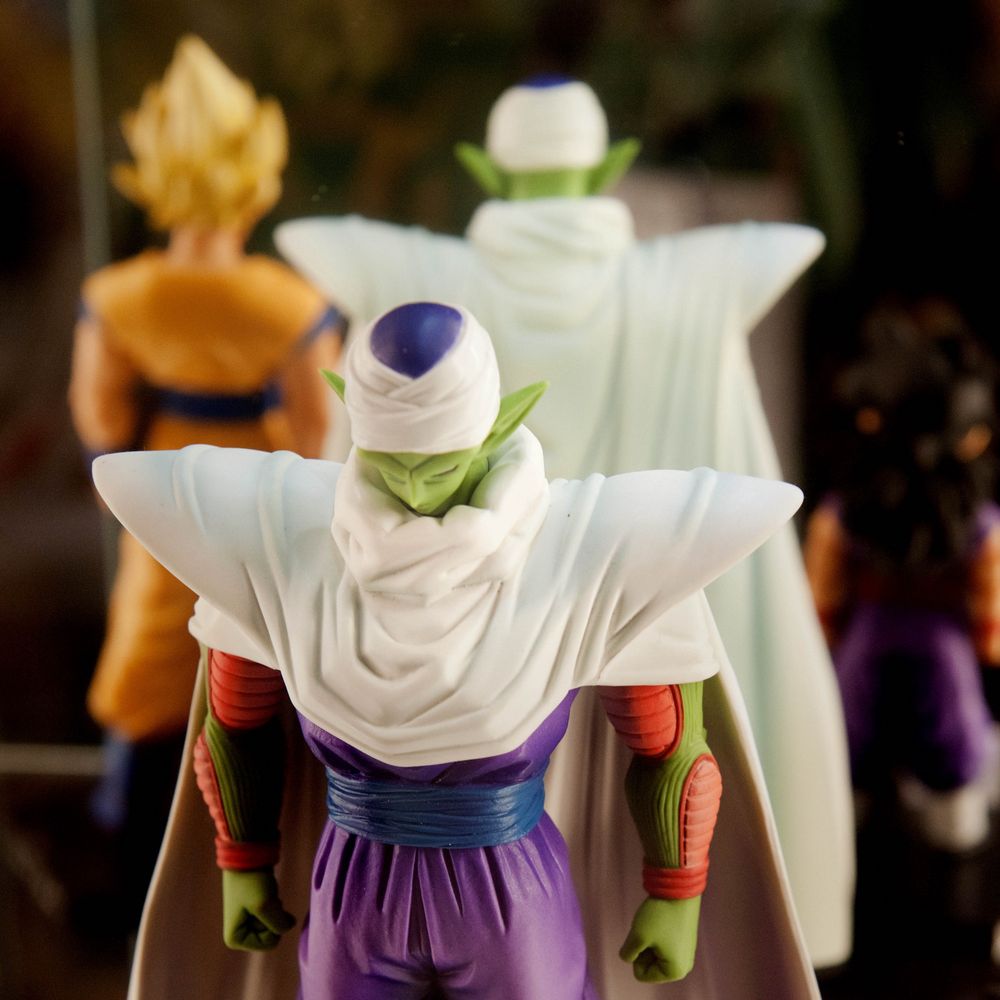Anyone who watches Dragon Ball Z knows that Piccolo is Black. Yes, he’s green. Yes, he was born from an egg. And yes, I know that technically he comes from Planet Namek. But to me, and to millions of other Black viewers, Piccolo is Black.
It’s not just Piccolo. It’s Raven from Teen Titans. Knuckles from Sonic the Hedgehog. Skeeter from Doug. Whenever there isn’t a Black character on a beloved animated show, Black people say to hell with it and just create our own.
Why is that? Well, first of all, representation matters. For children, in particular, not seeing themselves on-screen can lead to negative psychological outcomes, namely low self-esteem. Unfortunately, even though the data is clear that children benefit from seeing depictions of themselves on-screen, for many of us of a certain age, those portrayals just weren’t there in the pop culture phenomena of our youth. If I wanted to escape reality in the worlds of my favorite anime or action cartoons, I had to indulge in some race-bending.
And boy did I. The lengths I went to find myself in my favorite cartoons were truly art in itself.
Buttercup from the Powerpuff Girls had a black bob, the only hairstyle that was attainable for me at the time. Plus with her raspy voice and take-no-shit attitude, I just knew she was Black.
I didn’t want to feel like that, to hate such an integral aspect of my identity. So, I escaped, finding a haven in the amazing, brave characters of my favorite cartoons and imagining they were Black.
You really gonna tell me that Knuckles — the echidna from Sonic the Hedgehog whose prickly spines look awfully similar to locs — isn’t a Rasta who happens to have red skin?
Back in 1971, John Stewart’s Green Lantern made history as one of the first Black superheroes to appear in DC Comics. He remained a token for the Justice League and Justice League Unlimited series that aired three decades later. I wanted to see myself, a Black woman, as one of the main characters, too. So naturally, I gravitated to Hawkgirl, Lantern’s love interest, who used her helmet as a protective style until her hair was finally ready to flow freely on its own. I adopted her as one of us, too.
Raven from Teen Titans? Obviously Black. She just didn’t know her undertones, which is why she looked so gray.
But the one character that we can wholeheartedly agree on has to be Piccolo. Next to Goku’s childlike enthusiasm and Vegeta’s Napoleon complex, Piccolo felt like DBZ’s calm, cool, and collected straight man. While the rest of the original Z fighters fell off as extraterrestrial beings became increasingly prominent, Piccolo remained a fixture. In fact, at the height of Piccolo’s strength, he qualified as a Black, Bald, Leader Guy. I mean look at his nonfighting clothes if you need more proof. I’m not making this up.
Even if I were projecting, what’s the big deal? Race is an arbitrary social construct anyway, based on nonscientific criteria like the paper-bag test or the one-drop rule. That reality is made especially clear when considering biracial folks who are White-passing — think Logic and Halsey. It’s hella nebulous. As such, I’m gonna continue to claim my cartoon faves as Black, regardless of their actual skin color.
Growing up in suburban Southern New Jersey, my own racial identity was a struggle. I vividly remember coming home from school and crying because I wished I was White. Somehow, Whiteness seemed better — an attitude that’s not surprising considering the TV programming and my classmates’ racial makeup. I didn’t want to feel like that, to hate such an integral aspect of my identity. So, I escaped, finding a haven in the amazing, brave characters of my favorite cartoons and imagining they were Black. It helped me.
Children as young as four begin to enter the early stages of their racial identity development. By the time they’re in school, Black kids rank race as an important part of their identity much more often than their White counterparts. Of course Black children are adept at deconstructing and playing with ideas of race in popular culture. I enjoyed action cartoons and anime, not only because they were an escape from reality, but because there’s a clear sense of justice, of right and wrong. The heroes always do what they can to save those who are in danger, and they always come out on top. It’s no surprise why Black children wanted to see themselves in those narratives.
So when television producers fail to do the bare minimum and make cartoons inclusive, we do what we do best: We make jokes, we use our creativity, and we decide that Piccolo from Planet Namek is Black as hell.
